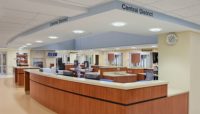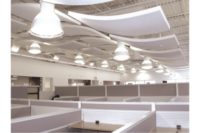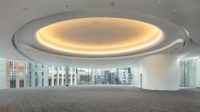In May 2006, Texas legislature authorized the expenditure of $45 million for construction of a performing arts facility as part of an arts, convocation and classroom building for The University of Texas of the Permian Basin. Plans for the new venue called for it to be located adjacent to the UTPB Center for Energy and Economic Diversification (CEED) midway between Midland and Odessa.
|
PROJECT NOTES |
By June 2008, a total of $20 million had been pledged by Permian Basin donors in support of the project, along with $6.5 million committed by the University of Texas System and an additional $7.5 million approved by the Texas Legislature. At the same time, a goal was established to provide a total of $89 million from all sources to fund construction and to fund an operating endowment fund of $8 million for the facility. Toward achieving that goal, it was announced that the University of Texas System would provide an additional $6 million if local donors would pledge or contribute an additional $4 million to the project.
Construction began in March, 2009 and now the Wagner Noël Performing Arts Center is fully operational.
“The architectural design of the new center is rooted in the landscape of West Texas, inspired by its geologic strata and the power of its endless skies,” says architect of record Boora Architects, of Portland, Ore.
The University of Texas at Permian Basin Wagner Noël Performing Arts Center was a great opportunity—and challenge—to showcase Texas contractor BakerTriangle’s experience and expertise. There are many different high-end finishes to the project, as well as challenging assemblies because of the critical acoustical designs. Sound transmittal through walls and ceilings was a huge concern in the design and construction of this building. There are several different types of plaster baffle walls designed to specific acoustical properties to enhance the sound.
SOUND WAVES
The Rehearsal Hall walls have special co-polymer acoustical panels installed at specific angles and shapes. Sound deadening insulation was installed above pyramid shaped ceiling panels suspended from the structure above. The Recital Hall walls have radius shapes, like waves crashing on the beach, covered with synthetic Venetian plaster. The plaster is laid out in the intricate and beautiful pattern of the West Texas geological strata.
The other walls and ceiling are wood panel grilles, backed with acoustic absorbing sound insulation. Skylights border the room to light it with natural sunlight. The main Performance Hall is the main centerpiece with some of the metal stud interior walls over 80 feet tall. The walls in the hall were metal stud walls with multiple offsets and reveals to trap the sound, covered with three and four layers of drywall. An interior synthetic plaster covers these walls to aid the acoustical properties. The radius balcony fronts were covered with multiple layers of gypsum board and synthetic Venetian plaster to majestically accent the room.
BakerTriangle furnished and installed pre-manufactured radius acoustical reflectors suspended from the structure above, within a maze of catwalks above everything. The exterior of the building was metal stud framing and sheathing with walls more than 90 feet tall. The main entry walls were at a 45 degree angle with 5-inch cast stone (very heavy) suspended overhead, which involved an engineer’s judgment on the connection of every stone back to the studs. The radical design of the exterior incorporated many different fasteners and connections along with the stringent acoustical demands of the architect and acoustical designer.








Report Abusive Comment